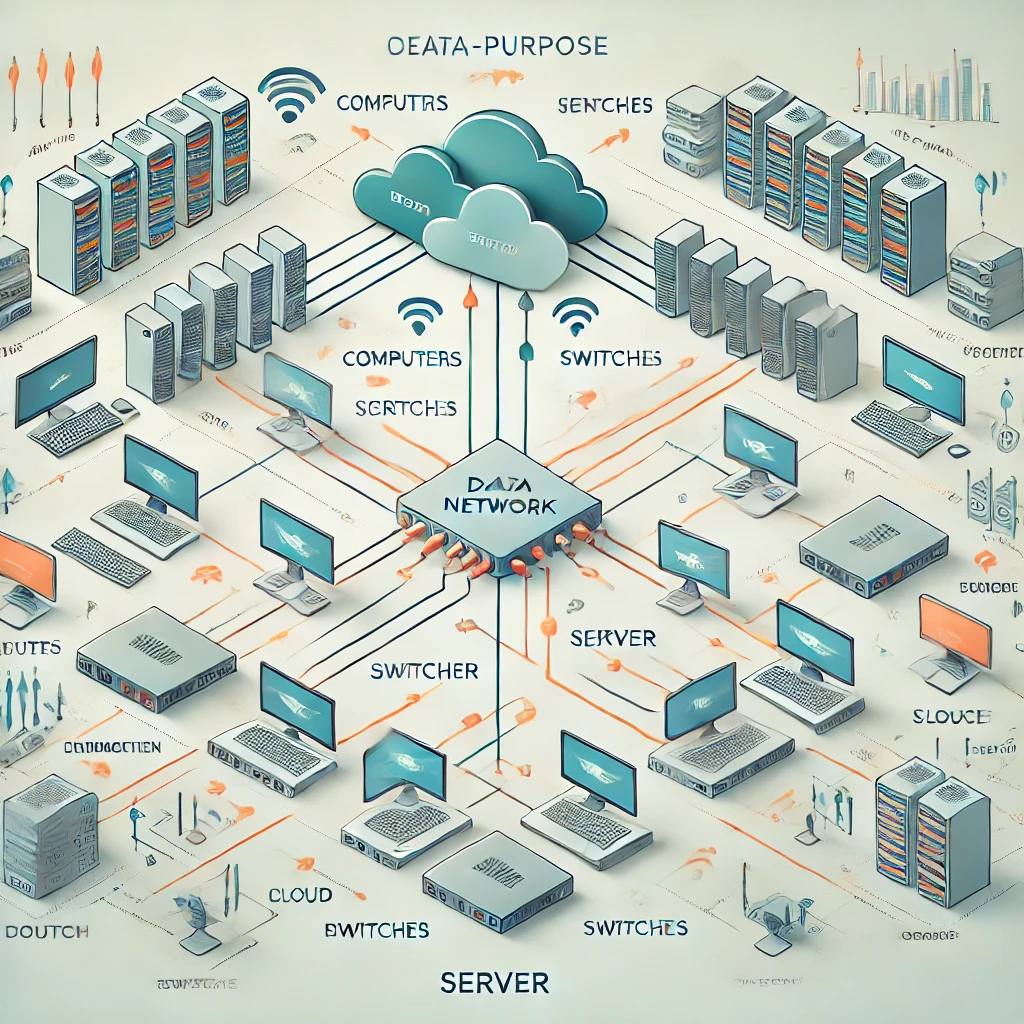Demultiplexing Techniques: Understanding Signal Separation in Modern Communications

Categories:
4 minute read
In the realm of telecommunications and data transmission, demultiplexing plays a crucial role in efficiently processing multiple signals transmitted over a single channel. This comprehensive guide explores various demultiplexing techniques, their applications, and their importance in modern communication systems.
Understanding Demultiplexing
Demultiplexing (often abbreviated as DEMUX) is the process of separating multiple signals that have been combined into a single transmission stream back into their original individual signals. It’s essentially the reverse process of multiplexing, where multiple signals are combined for transmission over a shared medium.
Basic Principles
The fundamental concept behind demultiplexing involves:
Signal identification
Channel separation
Signal reconstruction
Timing synchronization
Error management
Types of Demultiplexing Techniques
- Time Division Demultiplexing (TDD)
Time Division Demultiplexing separates signals based on their specific time slots in the transmission stream.
Key Characteristics:
Synchronous operation
Fixed time slot allocation
Regular sampling intervals
Buffer requirements
Clock recovery mechanisms
Implementation Requirements:
Precise Timing* Accurate clock synchronization
Frame synchronization
Guard time management
Buffer Management* Input buffering
Output buffering
Timing adjustment
Error Handling* Slot misalignment detection
Recovery mechanisms
Error correction
- Frequency Division Demultiplexing (FDD)
Frequency Division Demultiplexing separates signals based on their different frequency bands.
Components:
Filters* Bandpass filters
Lowpass filters
Highpass filters
Frequency Converters* Local oscillators
Mixers
Amplifiers
Applications:
Radio broadcasting
Television systems
Cable networks
Satellite communications
Mobile communications
- Wavelength Division Demultiplexing (WDD)
Particularly important in optical fiber communications, WDD separates signals based on different wavelengths of light.
Key Features:
High bandwidth capacity
Low signal loss
Minimal interference
Bidirectional communication
Scalability
Implementation Methods:
Prism-Based Demultiplexing* Uses optical prisms
Angular dispersion
Spatial separation
Diffraction Grating* Multiple wavelength separation
High spectral resolution
Compact design
Fiber Bragg Gratings* Wavelength-specific reflection
In-fiber implementation
Temperature sensitivity
- Code Division Demultiplexing (CDM)
Code Division Demultiplexing separates signals based on their unique coding sequences.
Characteristics:
Spread spectrum technology
Unique code assignments
Simultaneous transmission
Enhanced security
Interference resistance
Implementation Requirements:
Code Generation* Orthogonal codes
Pseudo-random sequences
Walsh codes
Synchronization* Code timing
Phase alignment
Frame synchronization
Signal Processing* Correlation detection
Code tracking
Error correction
Advanced Demultiplexing Techniques
- Statistical Demultiplexing
This technique dynamically allocates bandwidth based on actual traffic demands.
Advantages:
Improved efficiency
Better resource utilization
Adaptive capacity allocation
Reduced latency
Cost-effective
Challenges:
Complex implementation
Buffer management
Quality of Service (QoS)
Traffic prediction
- Orthogonal Frequency Division Demultiplexing (OFDM)
OFDM is crucial in modern wireless communications and digital broadcasting.
Key Features:
High spectral efficiency
Resistance to multipath
Flexible implementation
Scalable bandwidth
Enhanced throughput
Applications:
4G/5G networks
Digital TV
WiFi systems
Power line communications
Underwater communications
Implementation Considerations
- Hardware Requirements
Essential Components:
Signal processors
Filters
Amplifiers
Timing circuits
Buffer memory
Performance Factors:
Processing speed
Power consumption
Heat dissipation
Size constraints
Cost considerations
- Software Requirements
Key Functions:
Signal processing algorithms
Timing control
Error detection
Buffer management
System monitoring
Development Considerations:
Real-time processing
Optimization
Scalability
Maintainability
Testing procedures
Challenges and Solutions
Common Challenges:
Synchronization Issues* Clock drift
Frame alignment
Phase errors
Signal Quality* Noise interference
Signal distortion
Cross-talk
System Complexity* Implementation costs
Maintenance requirements
Troubleshooting difficulty
Solutions and Best Practices:
Design Optimization* Efficient algorithms
Hardware acceleration
Pipeline processing
Quality Assurance* Comprehensive testing
Performance monitoring
Regular maintenance
System Integration* Standardized interfaces
Modular design
Scalable architecture
Future Trends
Emerging Technologies:
Artificial Intelligence Integration* Adaptive algorithms
Smart resource allocation
Predictive maintenance
Software-Defined Demultiplexing* Flexible implementation
Dynamic reconfiguration
Enhanced efficiency
Quantum Demultiplexing* Quantum state separation
Enhanced capacity
Improved security
Best Practices for Implementation
Planning Phase:
Requirements Analysis* Traffic patterns
Capacity needs
Quality requirements
Budget constraints
System Design* Architecture planning
Component selection
Integration strategy
Testing methodology
Deployment Phase:
Implementation Steps* Component installation
System configuration
Testing and verification
Documentation
Optimization* Performance tuning
Resource allocation
Error handling
Monitoring setup
Conclusion
Demultiplexing techniques continue to evolve and play a crucial role in modern communications systems. Understanding these techniques and their applications is essential for engineers and technicians working in telecommunications and data communications.
As technology advances, new challenges and opportunities emerge in the field of demultiplexing. Staying informed about the latest developments and best practices ensures optimal implementation and operation of these crucial systems.
Whether implementing a new system or maintaining existing infrastructure, careful consideration of the various demultiplexing techniques and their applications helps ensure efficient and reliable communication systems that meet current and future needs.
Feedback
Was this page helpful?
Glad to hear it! Please tell us how we can improve.
Sorry to hear that. Please tell us how we can improve.